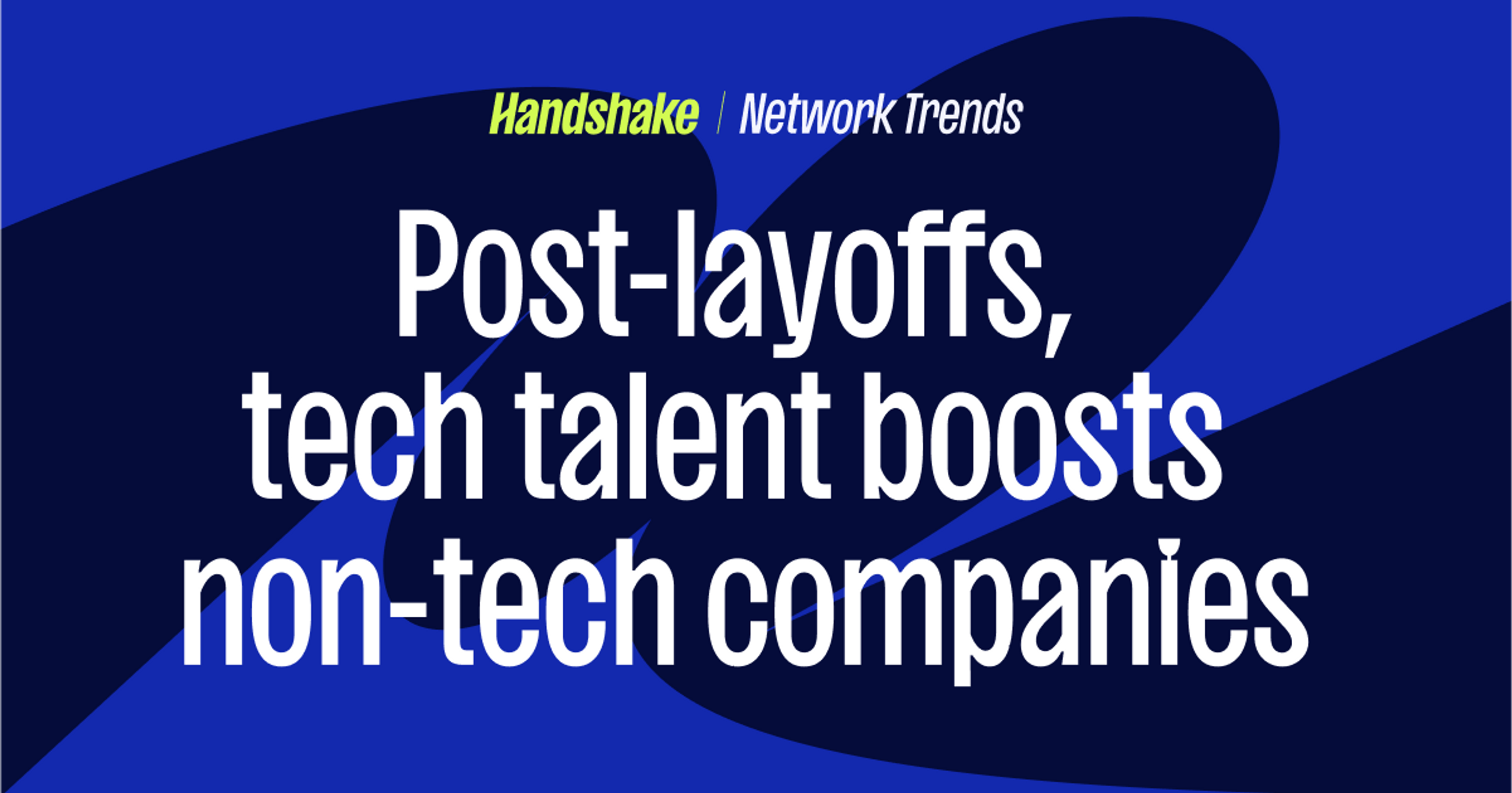Workers just entering the job market have a chance to explore tech roles in new industries and companies that might not have caught their attention when marquee names in tech were on massive hiring sprees.
And employers outside of the tech industry have an opening to capitalize on this moment to get hungry, adaptable, and tech-savvy young talent in the door.
Tech talent isn’t just for tech companies: every industry relies on technical know-how
As businesses grapple with how to keep pace amidst a rapidly-changing environment, all industries will have to rely on technology and talent with tech skills, to innovate, evolve, and digitize operations.
As a result, we’re already seeing variety of industries moving on the opportunity to attract the interest of young workers and, primarily, tech talent:
- Chevron is building a workforce to propel the integration of energy and tech. They offer STEM internships and early career opportunities, and are piloting an agile approach to recruiting for strategic functions like IT and PetroTech. Handshake helps Chevron build their brand as an employer of choice to attract tech talent.
- Fidelity’s new tech hires, which account for 18% of their workforce expansion, include full stack software engineers, data scientists, mobile/iOS engineers and architecture professionals. Fidelity uses Handshake to uplevel their brand through a digital presence, increase diversity representation in their talent pool, and create efficiency for their teams hiring thousands of candidates a year.
- General Motors is committed to an “all-electric future” and is using Handshake to invest in tech talent to support their electric vehicle goals and 50+ digital businesses. They’re looking to hire thousands of interns and entry-level positions this year, including to work on their software and hardware teams.
It’s clear tech talent doesn’t only need to search for a role at a notable Big Tech company. Today, every company relies on technical know-how in some way, shape, or form.
For example, with specialized software, automation, and AI, customer service is becoming an increasingly tech-heavy role. During the pandemic, teachers had to become overnight technical whizzes to adapt to virtual learning, with 49% of educators admitting their ability to use technology improved during the 2020-2021 school year.
Since more students are up-leveling their skills in modern ways, employers looking to attract tech talent need to rethink their reqs and talent pool. Handshake data found that a skills-based approach results in a 2.3X increase in technical candidates. Learn more about skills-based recruiting here.

Today, every company is a tech company.
40% of the Class of 2023 are open to applying to more industries.
Learn moreCapitalizing on the moment: How non-tech companies can attract early talent
With a clear need, how should non-tech companies capitalize on the abundance of early career tech talent graduating from college this year?
1. Emphasize the right benefits and attributes
Of course, compensation is a heavy factor when younger workers evaluate jobs. However, there’s another major consideration that actually ranks evenly with salary in its importance: job stability.
You might be surprised that a household-name brand doesn’t carry as much weight as you think, with only 41% of the class of 2023 saying it makes them more likely to apply for a job. Handshake has found that Gen Z prioritizes salary, job stability, and overall benefits ahead of the brand name.
Security aside, there are other perks that early talent is actively looking for. Flexibility is a big one, with 73% of Gen Z stating that they like having a flexible schedule. They’re also eager to advance their careers, with 71% of Gen Z agreeing that they expect to be promoted between six months to one-and-a-half years.
Stability, flexibility, benefits, and opportunities for career growth are all advantages and cultural attributes that should be spotlighted in your employer branding materials, particularly when trying to appeal to early talent.
2. Update your candidate experience
Because Gen Z possesses so much deep-rooted technical expertise, it’s safe to assume that they lack patience for processes that are clunky and inefficient. Paired with their eagle-eye focus on transparency and communication in the workplace, interview and onboarding expectations are high.
All job candidates—and particularly younger ones—will anticipate that you’ve invested some thought, effort, and technology into a smooth candidate experience.
Put yourself in a candidates’ shoes. Walk through the process yourself and ask recent hires for feedback to pinpoint areas that need the most improvement.
Read more: 5 ways Gen Z thinks you can improve your interview process
3. Carefully consider job requirements
Early talent is, well, early in their careers. They bring plenty of valuable skills to the table, but that doesn’t mean they come with years of experience under their belts.
For that reason, employers who want to adjust recruitment strategies to prioritize younger workers need to think critically about the requirements listed in job descriptions geared toward early talent. For example:
- How much experience (if any) do candidates actually need?
- Is that specific degree really critical? Or will other education, training, or skills suffice?
Keep in mind that there are other ways to evaluate talent beyond these traditional (and oftentimes overly-limiting) filters. Things like projects, assessments, and peer interviews might be a little more labor intensive, but they’re more inclusive and can ultimately help you find a better fit than any arbitrary criteria would.
4. Build your tech talent pipeline earlier
Effectively recruiting tech talent into non-tech industries starts before collecting applications for an open role. Employers need to build and fuel an early talent pipeline by:
- Creating internship programs to connect with talent even before they graduate and provide them hands-on experience in your industry
- Partnering with schools, particularly those with relevant programs, to attend career fairs and host virtual events where students can get a deeper dive into your company’s specific tech goals.
- Optimizing your Handshake company profile to elevate your brand and appeal to early talent
Efforts like these help companies forge strong bonds with young workers—many times before they even hit the job market.
